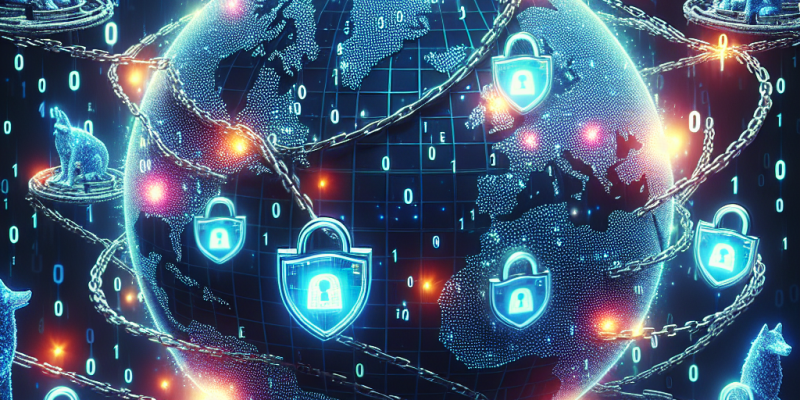Cybersecurity Trends: Navigating Threats in an Increasingly Connected World

In today’s hyper-connected world, where technology permeates nearly every aspect of life, cybersecurity has emerged as one of the most critical concerns for individuals and organizations alike. With the proliferation of digital devices and the rise of the Internet of Things (IoT), the attack surface for cybercriminals has expanded exponentially. As we move through 2023 and beyond, understanding the emerging trends in cybersecurity is essential for effectively navigating this complex landscape of threats and vulnerabilities.
1. The Rise of Ransomware-as-a-Service (RaaS)
Ransomware attacks have seen a dramatic increase, and a troubling trend is the emergence of Ransomware-as-a-Service (RaaS) platforms. These platforms allow cybercriminals to rent ransomware tools and services, enabling even those with limited technical skills to launch sophisticated attacks. As a result, organizations across all sectors are being targeted more frequently, with attackers demanding hefty ransoms in exchange for decrypting their data. This trend highlights the importance of robust cybersecurity measures, including regular data backups and incident response plans, to mitigate the impact of such attacks.
2. Increased Focus on Zero Trust Architecture
The traditional perimeter-based security model is becoming obsolete as remote work and cloud services grow. Enterprises are increasingly adopting a Zero Trust security model, which operates on the principle that no entity—whether inside or outside the network—should be trusted by default. Zero Trust emphasizes continuous verification and monitoring of users, devices, and applications, ensuring that access is granted only to those with legitimate need and authority. This approach not only enhances security but also aligns with compliance requirements in several sectors.
3. The Proliferation of IoT Devices
The exponential growth of IoT devices has created new opportunities for innovation but also introduced significant security challenges. Each connected device serves as a potential entry point for cyber attackers. Many IoT devices have been found to have vulnerabilities due to inadequate security measures, making them attractive targets. Consequently, organizations must prioritize securing IoT devices through the adoption of best practices such as network segmentation and regular firmware updates.
4. AI and Machine Learning in Cybersecurity
Artificial Intelligence (AI) and machine learning are playing an increasingly critical role in enhancing cybersecurity. Organizations leverage these technologies to analyze vast amounts of data for unusual patterns that may indicate a cyber threat. AI-driven solutions can automate threat detection and response, reducing the time it takes to identify and neutralize potential threats. However, cybercriminals are also utilizing AI to develop more sophisticated attacks, leading to a constant arms race between defenders and attackers.
5. The Human Element: Phishing Attacks and Social Engineering
Despite advancements in technology, human error remains one of the weakest links in cybersecurity. Phishing attacks and social engineering tactics continue to thrive, exploiting psychological triggers to deceive individuals into divulging sensitive information. As attackers refine their tactics, organizations must invest in employee training and awareness programs, educating their teams about the risks of phishing and how to recognize red flags in communications.
6. Regulatory Compliance and Data Privacy
With privacy regulations tightening globally, such as the General Data Protection Regulation (GDPR) in Europe and the California Consumer Privacy Act (CCPA), organizations must ensure compliance to avoid hefty fines and reputational damage. A focus on data privacy is driving new cybersecurity strategies, compelling businesses to adopt data protection measures that align with regulatory requirements. This trend emphasizes the need for comprehensive data governance frameworks that prioritize consumer privacy and data security.
7. Cloud Security Practices
As organizations increasingly migrate to the cloud, securing cloud environments has become paramount. Many cloud service providers offer robust security measures, but organizations must implement their security protocols to safeguard sensitive data. Trends such as Cloud Access Security Brokers (CASBs) and encryption techniques are gaining traction to ensure that cloud usage complies with security standards and mitigates risks associated with data breaches.
Conclusion: A Proactive Approach to Cybersecurity
As we navigate the increasingly connected landscape of 2023, the importance of cybersecurity cannot be overstated. Organizations must remain vigilant, adapting to evolving threats and leveraging emerging technologies. A proactive approach to cybersecurity—focused on threat detection, employee training, and regulatory compliance—will be essential to safeguarding assets and maintaining trust in an interconnected world. By staying informed of trends and investing in robust cybersecurity measures, individuals and organizations can effectively protect themselves from an array of persistent and emerging threats.














